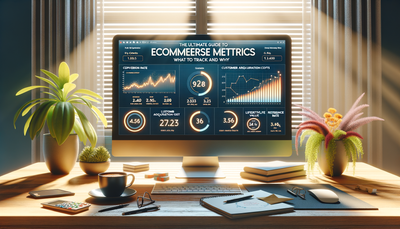How To Properly Set up Your Small Business's Bookkeeping System
Proper bookkeeping is essential for any small business. Setting up a bookkeeping system gives insights into the business’ finances, enables faster and simpler tax preparation, and helps to improve cash flow. This article explains the basics of setting up an effective bookkeeping system for a small business.Table of Contents:

Analyze Your Business’ Cash Flow
Properly setting up your small business bookkeeping system requires you to analyze your business’s cash flow. Keeping track of all the money coming in and going out of your business is incredibly important for its success. To analyze your cash flow, gather financial records such as bank statements, profit and loss statements, balance sheets, and more. Reviewing your transactions will allow you to identify expenditure patterns, problem areas, and potential areas for cost cutting. For example, it can help you identify which customers or vendors are causing you unnecessary financial burden or delayed payments. Looking at your cash flow can even help you recognize areas where you can make investments or expand. Having a clear understanding of your cash flow helps you imitate budget-friendly strategies and manage your business’s finances more efficiently. Do you need a website? Want to build a website but don't know where to start? Our website builder is the perfect solution. Easy to use, and with the ability to customize to fit your business needs, you can have a professional website in no time.
Create a Chart of Accounts
Creating a proper chart of accounts for your small business’ bookkeeping system is essential for both tracking income and expenses, and filing taxes. To get started, think about the types of transactions that you are expecting to record throughout the year. Divide these transactions into major categories like assets, liabilities, income, and expenses.For assets, list assets like cash, inventory, and accounts receivable. For liabilities, account for accounts payable and lines of credit. Income should include all forms of revenue your business will receive and expenses can range from payroll and rent to business travel and marketing.
List your chart of accounts with the appropriate codes. This will help to organize your financial data into meaningful reports and make it easy to track information. You should also make sure that your chart of accounts adheres to generally accepted accounting principles (GAAP).
Once the chart of accounts is set up, you are ready to start entering transactions into your bookkeeping system. Keeping a system with updated, accurate financial data helps small businesses identify areas of financial strength and areas that need improvement.
Set Up a System for Receiving Payments
Establishing a system to receive payments is essential for your small business’s success. The most important step when setting up a payment system is to find out what payment types you can accept. This includes cash, credit and debit cards, online bank transfers, PayPal, and checks.You should also make sure that you have the right merchant services set up to process the payments. This includes getting an appropriate account from a bank or payment processing company. To ensure accuracy, make sure you’re tracking all payments properly, so you’re able to reconcile invoices quickly and easily.
You should also consider implementing an automated payment system to streamline your bookkeeping process. Automated payment systems allow you to accept payments from customers securely and quickly. With automated systems, you’re able to track payments, send out automated invoices, and even set up automatic recurring payments for customers.
Finally, consider investing in a payment processing system with fraud protection features. This ensures that you’re able to keep your customer data safe, while also preventing fraud. By setting up a secure payment system, you’ll be giving yourself and your customers peace of mind.
Building a website with SITE123 is easy
Organize Useful Records for Tax Purposes
Organizing your business records is an important part of setting up a proper bookkeeping system. As a small business owner, it’s your responsibility to keep track of all of your accounts, invoices, and other documents. Additionally, having a good system in place for organizing these records is essential for filing accurate tax returns.The first step in organizing your documents for tax purposes is to create a filing system for all of your records. It’s best to use folders and labels to identify each type of record. This will make it easy to find the documents you need when it’s time to do your taxes. Additionally, you should store all of your records in a secure place.
You should also consider setting up an online record management system. This will make it easier to find and access important documents when you need them. Additionally, an online system will reduce clutter and make it easier to back up important documents in case of an emergency.
Finally, it’s essential to keep your records organized. That way, when it’s time to do your taxes, you’ll have all of your documents in one place and ready to go.
Choose a Bookkeeping System
When choosing a bookkeeping system for your small business, it is important to choose one that will be easy to use, but also one that meets your business’s specific needs. There are many different types of bookkeeping systems available, such as online software, desktop software, or even manual bookkeeping.Online bookkeeping software offers convenience and scalability as it can be used from any device with an internet connection. Desktop software gives business owners the flexibility to use the software anytime, anywhere. It also allows them to customize the system to their specific needs. Manual bookkeeping is a less expensive option and often provides a more organized and detailed.
Consider the features of each bookkeeping system to determine which one is the best fit for your small business. Does the software offer reporting and budgeting features? Is customer service and support available for the software? Additionally, business owners should consider the cost of the bookkeeping software to determine if it fits within their budget.
Choosing the right bookkeeping system is important to the success of your small business. Take the time to research and compare different bookkeeping systems to find one that meets your specific needs and budget.
Monitor Your Business’ Finances
Monitoring your small business’ finances is an important part of establishing the core of your business. This can include cash flow, budgeting, and tracking expenses. The goal of monitoring your finances is to create an understanding of how your business operates financially so you can make sound, informed decisions.For better financial management, it’s important to set clear goals, which include a budget for each fiscal year. This will allow you to determine what investments you need to make and what expenses you need to reduce. In addition, tracking your expenses on a regular basis will give you a better understanding of where your resources are being allocated.
Setting up a bookkeeping system within your small business can make monitoring your finances easier by allowing you to categorize expenses and generate custom reports. Additionally, automated systems and software can help keep your books and accounts up to date. This will give you a real-time picture of your business’ finances and help you make more sound financial decisions.





